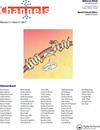通往新耶路撒冷的道路上的桥梁与强盗:移民与恐怖主义的相关性研究
IF 3.2
3区 生物学
Q2 BIOCHEMISTRY & MOLECULAR BIOLOGY
引用次数: 1
摘要
2017年1月下旬,特朗普总统签署了一项行政命令,禁止非美国公民从七个不同的国家进入美国。该命令的标题是“保护国家免受外国恐怖分子进入美国”。正如暗示的那样,声明的目的是限制移民的数量,以避免未来的袭击。特朗普总统声称,为了确保美国移民审查程序的有效性,从而保护国家免受恐怖主义入侵,这项行政命令是必要的。为了达到目的,移民必须在恐怖主义中发挥作用。因此,分歧的关键在于,移民的涌入——尤其是那些来自恐怖主义易发国家的移民——与接收国恐怖主义活动的发生之间是否存在联系。在这项研究中,我们试图通过检查当前的文献和使用数据来分析六个国家的移民水平以及恐怖主义事件,来发现来自恐怖主义倾向国家的移民与恐怖主义之间是否存在联系。这个研究项目的假设是,当一个国家接收越来越多的来自恐怖主义倾向国家的寻求庇护者时,他们将在国内经历相应的恐怖袭击次数的增加。我们的基本前提是,移民流动形成了一个社会桥梁,在输出国和接受国之间移植文化、意识形态和个人。因此,我们正在试图找出移民和恐怖主义之间是否存在强烈的相关性。因此,零假设是,来自恐怖主义易发国家的移民与特定国家内恐怖袭击的发生之间没有相关性。我们的研究表明,正如我们的假设所预测的那样,恐怖主义的增加与来自恐怖主义易发国家和地区的移民增加有关。来自德国和土耳其的数据显示,寻求庇护者移民与恐怖主义事件之间存在强烈的正相关关系。值得注意的是,仅凭移民数量不足以预测恐怖袭击的增加。相反,移民只是可能导致恐怖主义增加的众多因素之一。然而,我们的论点是,来自恐怖主义产生地区的移民是恐怖主义活动增加的重要预测因素。本文章由计算机程序翻译,如有差异,请以英文原文为准。
Bridges and Bandits on the Road to the New Jerusalem: A Study of the Correlation Between Immigration and Terrorism
In late January of 2017, President Trump signed an executive order banning non-American citizens traveling into the United States from seven different countries. The title of the order was, “Protecting the Nation From Foreign Terrorist Entry Into the United States.” As implied, the stated purpose was to limit the number of immigrants in order to avoid future attacks. President Trump claims that the executive order is necessary to ensure the effectiveness of the United States’ immigrant vetting procedures and thus, protect the nation from terrorist incursion. For the order to serve a purpose, immigration must play a role in terrorism. Thus, the essential point of disagreement is whether a connection exists between the influx of migrants—especially those from terror-prone nations—and the occurrence of terrorist activity in the receiving nation. In this study, we attempt to discover if a link exists between immigration from terrorprone nations and terrorism by examining the current literature and using data to analyze the levels of immigration as well as the incidents of terrorism in six countries. The hypothesis of this research project is that as countries receive increased levels of asylum seekers from terror-prone nations they will experience a corresponding increase in the numbers of terror attacks within the nation. Our basic premise is that immigrant flows form a social bridge, transplanting cultures, ideologies, as well as individuals between the sending and receiving nations. Thus, we are seeking to find out if there is a strong correlation between immigration and terrorism. The null hypothesis, then, is that there is no correlation between immigration from terror-prone nations and the occurrence of terror attacks within a particular nation. Our research shows that, as predicted in our hypothesis, increased terrorism is linked to increased migration from terror-prone nations and regions. The data from Germany and Turkey display a strong positive correlation between asylum-seeker migration and incidents of terrorism. It is worth noting that immigration alone is not enough to predict a rise in terrorist attacks. Rather, immigration is only one of many factors that may lead to increased terrorism. However, it is our contention that immigration from terror-producing regions is a significant predictor of increased terrorist activity.
求助全文
通过发布文献求助,成功后即可免费获取论文全文。
去求助
来源期刊

Channels
生物-生化与分子生物学
CiteScore
5.90
自引率
0.00%
发文量
21
审稿时长
6-12 weeks
期刊介绍:
Channels is an open access journal for all aspects of ion channel research. The journal publishes high quality papers that shed new light on ion channel and ion transporter/exchanger function, structure, biophysics, pharmacology, and regulation in health and disease.
Channels welcomes interdisciplinary approaches that address ion channel physiology in areas such as neuroscience, cardiovascular sciences, cancer research, endocrinology, and gastroenterology. Our aim is to foster communication among the ion channel and transporter communities and facilitate the advancement of the field.
 求助内容:
求助内容: 应助结果提醒方式:
应助结果提醒方式:


